Recreational fishing in Western Australia is governed by state laws and is largely a state responsibility, so as you prepare to tuck into a democracy sausage on May 18th you could be forgiven for thinking the federal election cannot possibly impact your fishing experience, unfortunately, this is simply not true.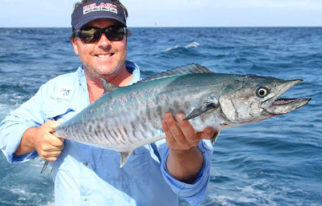
So far this election campaign, the current Coalition government has pledged $29 million for a variety of fishing-based initiatives including $20 million to improve boating facilities and $8 million to restore habitat.
To learn more about the Coalition $29 million commitment click here.
Less than 24 hours after first publishing this article highlighting the fact the Australia Labor Party (ALP) had so far failed to announce any commitments, they pledged $45 million to improve recreational fishing including improving boat ramps, native fish stocking and better consultation processes.
To learn more about the ALP $45 million commitment click here.
In Western Australia, recreational fishers directly inject $2.4 billion into our local economy every year. The lack of major well-developed commitments by both parties is disappointing, both major parties have failed to fully appreciate just how important fishing is to the community and to the economy.
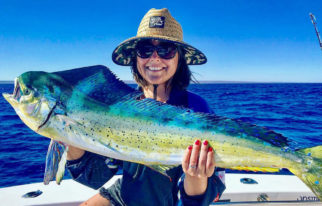
One area of major difference between the two key parties that is likely to impact on your fishing experience is the way they plan to manage our network of Commonwealth marine parks. The 2019 election is looming as a watershed moment in the way these parks are managed.
Like most fishers, Recfishwest support marine parks when they are created for the right reasons, put in the right places and implemented using simple, practical management that is risk-based, transparent and subject to regular review.
To read Recfishwest’s position on marine parks click here
Developing Australia’s network of Commonwealth marine parks has been a very long and time-consuming process that started more than 20 years ago. Recfishwest has participated in this process from the beginning and has invested many years of hard work and submitted countless submissions during this time. In July last year, Australia’s very first complete network of Commonwealth marine parks came into effect, providing Australia with one of the largest areas of marine protection in the world.
To learn more about the history of Australia’s network of Commonwealth marine parks click here.
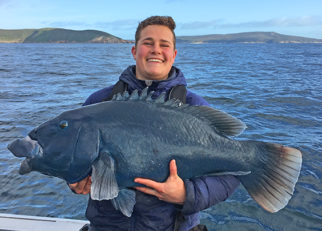
Despite management plans for Western Australia’s Commonwealth marine parks taking effect on 1st July 2018, the Australian Labor Party has announced it does not intend to let the current 10 year management plans run their course and has committed to replacing the current management plans with ones they developed back in 2012 when last in government.
Recfishwest believe the current management plans provide far better environmental, social and economic outcomes for Western Australia than the 2012 plans ever did. Some examples of the way the current plans provide much better outcomes than the 2012 plans include;
Perth Canyon (Rottnest Trench) Commonwealth Marine Park
The current plans retain access to important fishing grounds near Perth including the Rottnest Trench and the Perth Game Fishing Club’s FAD program west of Rottnest while at the same time providing an additional 134km2 of National Park (IUCN II – Green Zone) protection and 1693km2 of Habitat Protection Area (IUCN IV – Yellow Zone) protection. The current management plans also provide protection for two of the three canyon heads compared to the 2012 plans which provided protection to only one.

Geographe Bay Commonwealth Marine Park
The current plans align Commonwealth green and yellow zones to similar zones in the state-based Ngari Capes marine park providing much greater shore to shelf connectivity and making it much easier for people to know where the zones are.
Bremer Commonwealth Marine Park
The current plans provide an additional 2,888km2 of green zone protection for the Killer Whale aggregations near Bremer Bay, which will completely disappear if the 2012 plans are implemented.
Dampier Commonwealth Marine Park
The current plans allow access to pelagic species in the Madeleine Shoals to the North of Legendre Island, while the irregular boundary of the 2012 green zone made it very hard to know if you are inside or outside of the prohibited fishing area.
Ningaloo Commonwealth Marine Park
The current plans have 116km2 of green zones which align to the state marine park boundaries providing shore to shelf connectivity while the 2012 plans didn’t have any green or yellow zones.
Kimberley Commonwealth Marine Park
The current plans provide 4000km2 more green and yellow zones compared to the 2012 plans and they also improve accessibility for Broome fishers who are known to fish within 30nm of the coastline from Cape Leveque to Broome and within 90nm of Broome.
For a full comparison of the zoning between the current plans and the 2012 plans click here:
Commonwealth marine park – 2019 election comparison of zoning
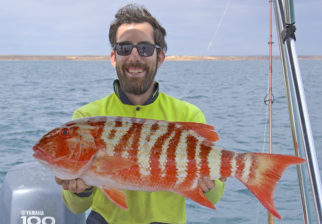 It should be noted that all sectors of the Australian fishing industry fully support the current management plans, which were created following years of consultation and which achieve a good balance between sustainability and the right of Australians to catch fish, eat fish and make a living from the ocean.
It should be noted that all sectors of the Australian fishing industry fully support the current management plans, which were created following years of consultation and which achieve a good balance between sustainability and the right of Australians to catch fish, eat fish and make a living from the ocean.
To read a joint industry letter supporting the current management plan, click here.
To view fishing identity Al McGlashan’s view on marine parks, click here.
Recfishwest, The Australian Recreational Fishing Foundation, Game Fishing Association of Australia, Australian Fishing Trade Association and Seafood Industry Australia have all expressed support for the current management plans, agreeing they achieve an acceptable balance between sustainability and access to Australia’s fish resources. These groups unanimously agree the current plans are a vast improvement on the Frankenstein like 2012 plans Labor wants to bring back to life.
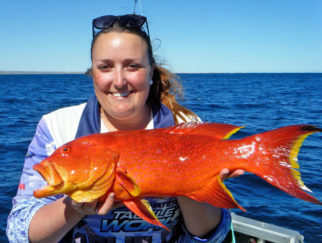
While the Labor Party has been a vocal critic of the current marine park management plans for the Coral Sea they have been largely silent on the current management plans for marine parks in Western Australia. Could this be because the current management plans provide more access to important fishing areas? Or could it be because the current plans provide greater environmental protection in areas where it is needed than the 2012 plans ever did? Or could it simply be the needs of Western Australians are once again playing second fiddle to the Eastern States?
If you get a chance to talk to any of your local candidates in the upcoming election on behalf of the 750,000 Western Australians who go fishing every year, I urge you ask these candidates to pledge their support for maintaining Western Australia’s existing marine park management plans. Regardless of who wins the upcoming election the current management plans are far better than the 2012 plans and all candidates who support fishing and who truly support the environment should support retaining the current plans until they are due for review in 2028.